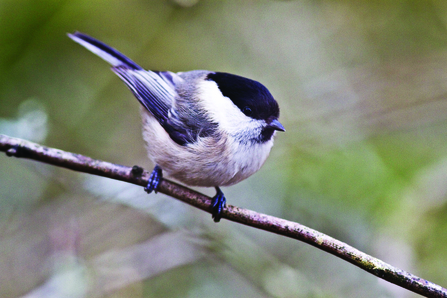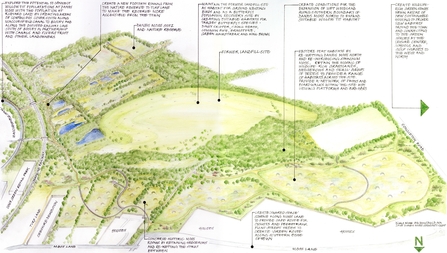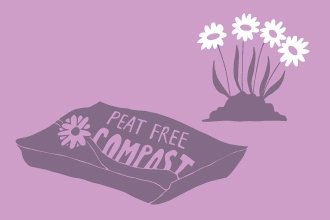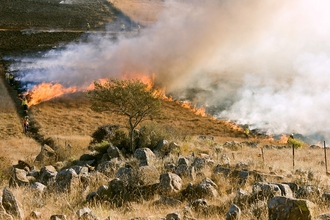* Please note this page is not currently being regularly updated *
Danes Moss is the largest lowland raised bog in Cheshire. Unfortunately, the northern section is under threat from development, so we are fighting hard to protect it. Current plans will see the widespread destruction of the site to make way for nearly 1,000 houses, retail units and a link road.
What’s at stake?
We have long insisted that Danes Moss North is valuable to wildlife. In November 2022, we successfully championed the designation of Danes Moss North as a Local Wildlife Site (LWS). Not only is it connected to our nearby Nature Reserve, but it is breeding ground for the Willow tit , the UK’s most threatened bird. Developing this site would put the Willow tit at risk of localised extinction.
Danes Moss North sits on deep peat. Peatlands cover just 10% of the UK, yet they store 3 billion tonnes of carbon- more than the forests of the UK, France & Germany! They are one of the best habitats for helping us tackle climate change.
Over the years, the peatlands of Danes Moss North have been damaged leading them to release carbon into the atmosphere. This is making the climate crisis worse. By restoring them, we can reverse this process and eventually make them carbon sinks once more.
In partnership with Save Danes Moss, we’ve worked to create a vision for what Danes Moss could look like if we stopped the development. We want to see the site restored so it benefits people, the climate and nature. Take a look at our vision and find out about the latest news and events on their webpage.
Our plan to save Danes Moss North and give it back to nature
In 2023, we doubled down against the planning applications on Danes Moss North with a petition that was backed by 7,000 people. In addition to rejecting the current development, we called for Danes Moss North to be removed from the Council’s planning strategy. If this happens, it is unlikely any further developments could come forward on this precious wildlife habitat.
We handed our petition to the council in June 2023 and are awaiting its debate.

Willow Tit c. Harry Hogg
Why is the development so bad for nature?
The planned development will be a significant risk to the UK’s second most threatened species of bird, the Willow tit. This Red-listed species was identified as breeding on the site in 2021.
Willow tits have suffered a 94% loss in their numbers over the past five decades. They seek out damp scrubby areas to nest and have a very small range which keeps them confined to their local area. The destruction of their habitat in Macclesfield will push the Willow tit one step closer to local extinction.
Many other species such as barn owls and the rare small heath butterfly will also suffer as their habitat is destroyed.
FAQs
Haven't the Council committed to taking climate action?
In 2019 Cheshire East Council committed to 'work to encourage all businesses, residents and organisations in Cheshire East to reduce their carbon footprint by reducing energy consumption and promoting healthy lifestyles.' The council has therefore pledged to champion climate action across the borough.
As the development was first put forward before this commitment was made, the development has not been considered in relation to the Council's new obligations as a climate champion. As such, the development is now inconsistent with the Council’s own commitments.
On 20th Jan 2022 Cheshire East Council announced a pledge to join the UK100 and to make the entire borough carbon neutral by 2045.
How important is this site for nature?
Peatlands (sometimes known as mosses) are internationally important habitats. Like ancient woodland, they are considered irreplaceable.
Although the peatland at the development site has dried out over the years, it now supports a rich mosaic of wildflower grassland, rush pasture and young woodland and underneath the peat deposits are still there, locking in thousands of years of carbon absorbed from the atmosphere. A network of tree lined ditches and hedgerows mark out the fan shaped ‘moss rooms’ where peat was cut in ancient times. The site is home to a suite of species which have seen dramatic declines nationally as their habitats have gradually disappeared, including the common lizard, the small heath butterfly and the rare willow tit.
Even if we succeed, won’t they just submit a new application?
Possibly and that is why we want the Danes Moss North site removed from the local planning strategy. In doing this, we can't guarantee it won't be developed but it will make it much harder for a development to come forward.
Laws and policy have changed since outline permission was approved. It is highly unlikely this site would be selected for development if brought forward in the local plan today. New commitments for developments to deliver a net-gain in biodiversity and consider the effects on our climate mean that the same development would likely need to do MORE if it were re-submitted. That’s not forgetting the fact that the Council’s climate responsibilities would also need to be considered.
What is Cheshire Wildlife Trust’s stance on development?
Cheshire Wildlife Trust supports sustainable development in the right places. We can’t just jump on the first space we see for convenience, the location of a development must be justified in a much wider context. National Planning Policy states that planning decisions should recognise that some undeveloped land can perform many functions, such as for wildlife, recreation, flood risk mitigation, cooling/shading, or carbon storage.





